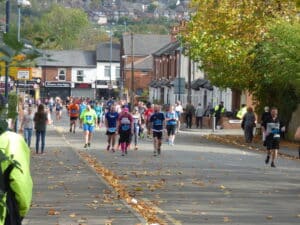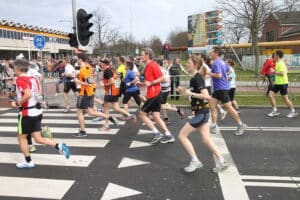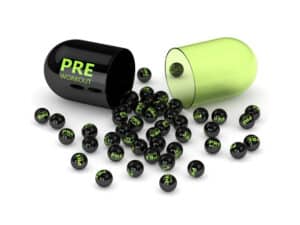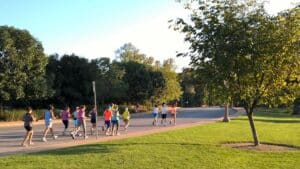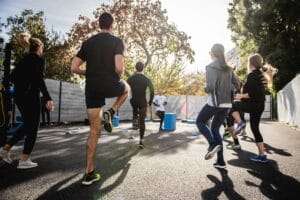Running Pace Calculator
Calculate Your Running Pace
Enter any two to calculate pace, time or distance| : | : |
| : | : |
How to Calculate Running Pace
Whether you are an experienced runner or a beginner, your effort for a daily run can make you a great runner. It also helps you in maintaining your fitness levels. Many people do not know how to calculate the running pace and why it is that important. Well, we are here with answers to all your questions.
If you want to calculate the running pace, then you will need to apply the formula. For calculating the running pace, you will need to figure out every single thing as well. Below is the complete guide to calculating the running pace.
Things to note down while calculating the running pace:
There are many important factors that you must consider to calculate the running pace. You must read the whole blog carefully. The first and most important thing is to calculate the average pace per km.
Your Distance:
The most important thing to note is how far you will go! You must make sure how far you will go, and it is the main factor to calculate the running factor.
There are many tools, including online, mapping, and wearable ones. All you need to do is enter the starting point and also enter a final destination. To reach your ideal pace, make sure to set a goal pace. Try calculating pace per mile and also check your performance level.
If you have a perfect fitness level and you are ready for the racing challenge, you can run the racecourse that is locally certified. You can easily map out the distance for you.
Time Taken:
Another thing to keep in mind is to make sure how long it will take for you to run. It would help if you timed the running pace.
Fitness is not only lacing up the sneakers and also hitting the road. But here, you must also need the tools to help you out. For the time being, you can use a normal wristwatch.
Or you can also use the stopwatch function from your phone and set the timer. Then stop it while reaching the finishing spot. It will be your finish time. You must make sure how much you can run miles per hour.
Make sure never to exaggerate the speed. You will only need to put the numbers you will try to calculate off and also set up. You must make sure to run at normal speed but don’t forget to stop the stopwatch when you stop for relaxing or cooling down.
Calculations:
You can easily calculate the pace. All you need to do is take the running time and then divide it by the total distance you ran. For example, if you have covered the 4 miles in almost half an hour, divide 30 minutes by 4 miles, and you will get the pace as a result.
Things to know about running pace:
You must avoid having to calculate the pace by hand by using a speed and distance monitor or a GPS stopwatch.
You will also be provided with the current pace throughout all your running. If you really want to know whether you slow down or speed up throughout your runs, you can also measure the run pace in different segments.
And you must calculate the pace at the points. You can use the 10 minutes as your segments in racing. There are different online mapping tools that will provide the best ways in measuring the running route accurately and quite easily.
Benefits of running slow:
If you run slow at a conversational pace, it has a lot of benefits for your body. Below are the benefits of running at a slow pace:
- It helps you in strengthening the muscles in the arms, torso, and legs.
- It also helps in adapting ligaments, joints, tendons, and bones that are getting stressed from running.
- Additionally, helps you promote efficient running.
- Teaches discipline, patience, and handling physical fitness of the body.
- Trains the muscular, respiratory, and cardio systems to work efficiently.
- Helps in increasing the size and quantity of mitochondria, glycogen stores and improves oxygen.
You can also add a longer life span to your list. Generally, runners have an estimated 20 to 50 percent reduction in risk of premature mortality.
How can you run slower?
Whenever you start to run, it is really best to start with a slow pace. It will help if you run at a conversational pace that is about 10 to 15 minutes for giving the body a chance for warming up.
In addition, it is perfect to end the workout with almost 5 minutes that is easy to cool down until the pulse is below 100 beats each minute.
The cool-down time also helps the blood that travels to the extremities while you exercise for returning to the brain and heart.
What does pacing mean?
If you refer to its basic definition, pace refers to the rate at which you are running. It is the meaning how quickly you can easily run at a specific distance.
The main issue behind it is making sure that you must preserve quite enough energy for the whole workout. It is also an important factor to run long distances. If you do not pace, it can risk potential issues in your body like overtraining and burnout.
Why is there a need for different paces?
The simple thing to put is what works great for one type of run that will not work as well for another. Let’s suppose you are designated today for doing the speedwork like making sprints or doing rounds of intervals.
If you want to get benefit from the high and fast workouts, the body will need to maximize the energy output in fueling powerful and rapid running.
Suppose you want to take the same level of the workout and also apply it for the long run that is just unsustainable and straight up. For the inverse, the same logic is implicated.
Different Paces and Physiological Benefits
The best part is that there are different intensities at which you can easily run, and they are not just for show. These come with physiological benefits.
By doing low-intensity workouts, your body will be more focused on improving your aerobic capacity. As it is actually a challenge to run at almost low intensity for a long time. And here, the low intensity means that you will not need to do easy runs.
You must also do endurance workouts that will work almost roughly from 60% to 70% at the maximum heart rate. It is a solid rate at which the body can easily learn for producing and utilizing oxygen constantly as a constant energy source for the muscles throughout you are running pace.
Vary the Training Intensities:
You can also vary the training intensities to make sure that you are working perfectly. The thing to remember is while you make running goals, they can help you benefit more from aerobic training as compared to anaerobic training.
Why are you limiting to just one approach only? You can shift to others as well! You cannot easily run every race, or you should not try to run every same type of race. The only way to do successful racing is by going for varieties.
If you are a runner, you have a complex hybrid engine for sure. The tuning of the body is essential as it requires doing exercise at certain paces for stimulating endurance.
It also helps in increasing anaerobic power and metabolic efficiency. As a runner, you will need to extend your capacity in each of the realms; here, the training is essentially composed of different workouts that are essentially made to invoke a physiological, specific response.
Therefore, the plan is to prepare you for running any distance from 100m to a marathon that will contain workouts of different varieties.
If you are an evolving runner, the main challenge is about how you can execute the range of different paces by doing constant training, fatigue effects, and varied terrains.
There are more professional athletes that say they “run by feel,” but it does not mean at all to be a recreational runner. It does not matter about your athletic caliber. As a runner, you will require a stable methodology to achieve training intensities that vary.
How can I easily find the perfect running pace?
Before you make it into the process of making your running pace perfect. It is quite important for addressing the elephant in the room. Every athlete has is having unique capabilities.
You can easily feel the running times when you are running with other athletes, and you will know if you are running slow or fast. You can reach the ideal pace that will right fit the training you do.
Try using pacing charts:
When you initially start out, your pacing will most likely differ from the averages you discover on the internet. It takes time for your body to adjust to such a wide range of paces, and no athlete is capable of tackling elite-level pacing right away.
If you want to figure out the pace from scratch, you can find a chart that measures an average of the pace for the caliber of training, and it can be excellent from the beginning point. There are different charts for calculating your pace. An efficient pace calculator can help you a lot in getting better performance. Whether you run a half marathon, a marathon, or any other running, you must calculate the same running pace. Below is the running pace chart for each run:




Focus on the Feeling and Not only the Matrices:
If you are setting the goals for training and running, it is not really important to strictly dial into hitting the right metrics.
There are pacing calculators and pacing charts that do not have specific numbers that are nearly specific enough to train yourself. It is as important to pay attention to the body and how it responds to you.
And if you are wondering why you must focus on how to feel when it is not a consistently accurate measure. The training plan for a race not only depends on pace but also depends on what you intake and how you treat the body.
Frequently Asked Questions
You can easily calculate the race performance by diving the total minutes by miles you run.
There are different things added to be perfect in a marathon. The most important things to make sure of while running a marathon and practicing for it are:
- Building your muscles
- Strengthening your body
- Running on a daily basis
- Providing your body with enough nutrition
You can achieve the target race pace by doing consistent workouts and making your that you are performing really well. You can try different types of races, so you are never bored of racing. The target race pace can be achieved for an average runner by running almost 25 miles a week. So you can run at a faster pace.
Conclusion
If you want to know how to run a faster marathon or how to run a faster half marathon, you must know how to calculate the running pace first. Make sure that your heart rate is normal during the pace time.
It will help you a lot in achieving your goals more effectively. You can easily win long races and can boost your stamina as well. Make sure to always calculate your running time to make sure that you are running at a great pace.
RELATED ARTICLES

















